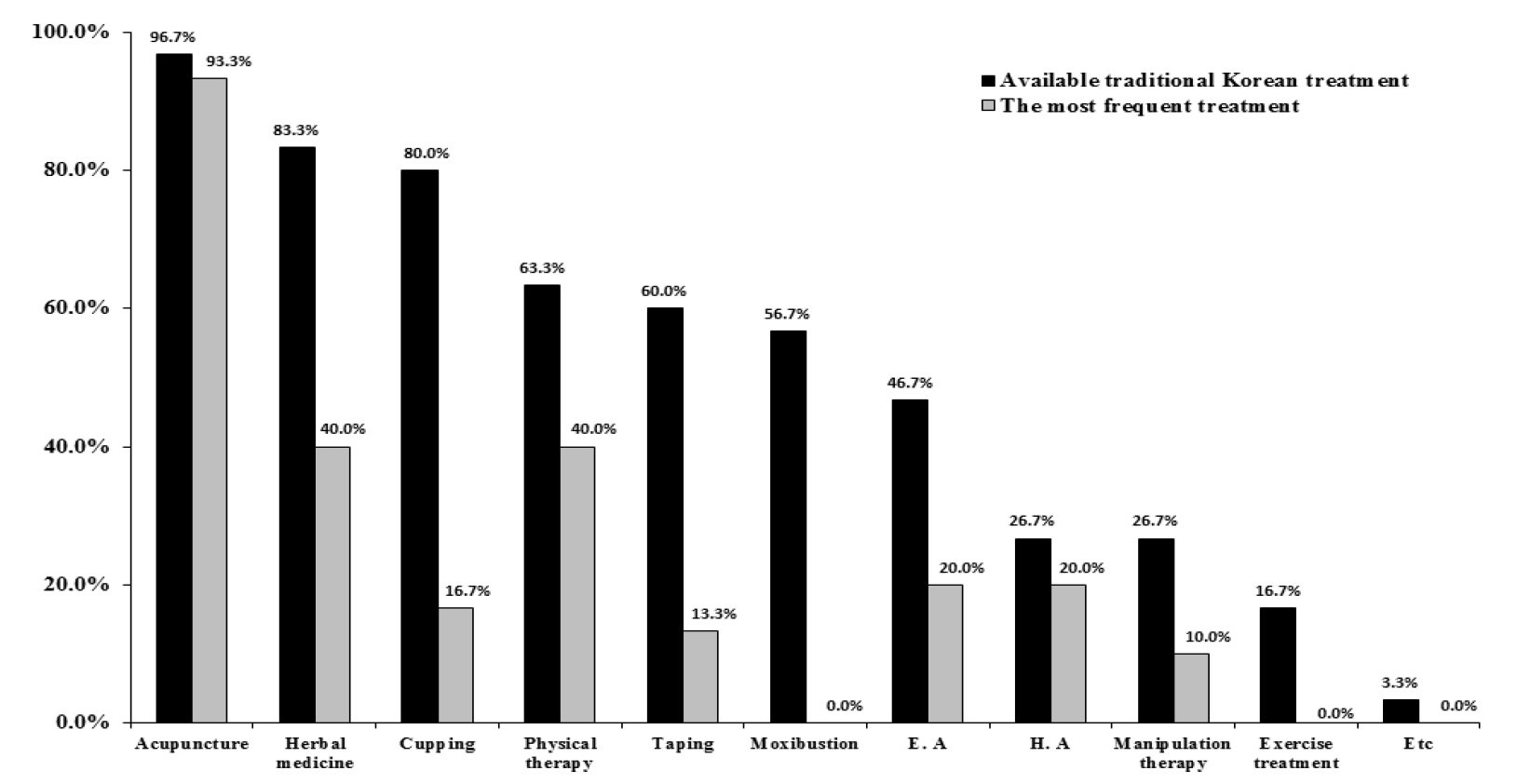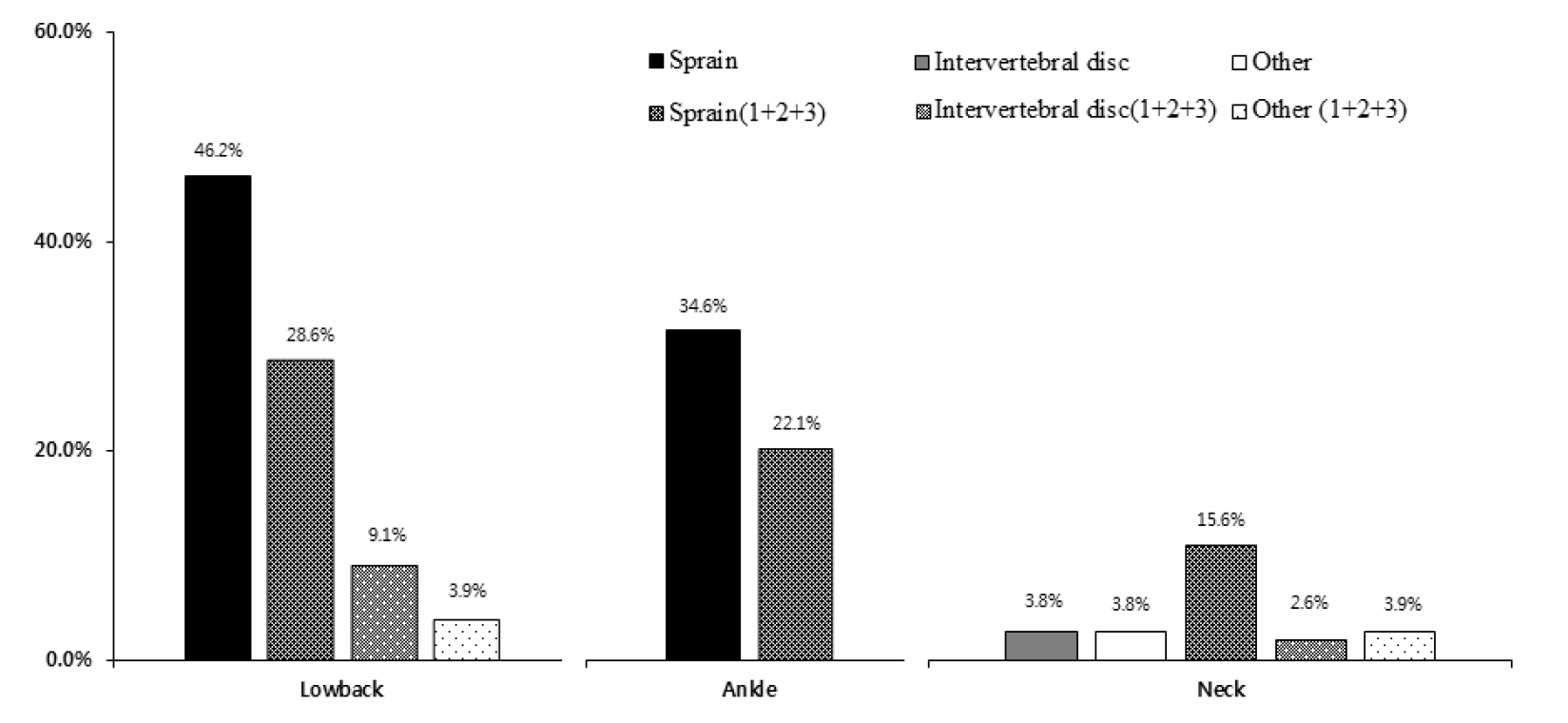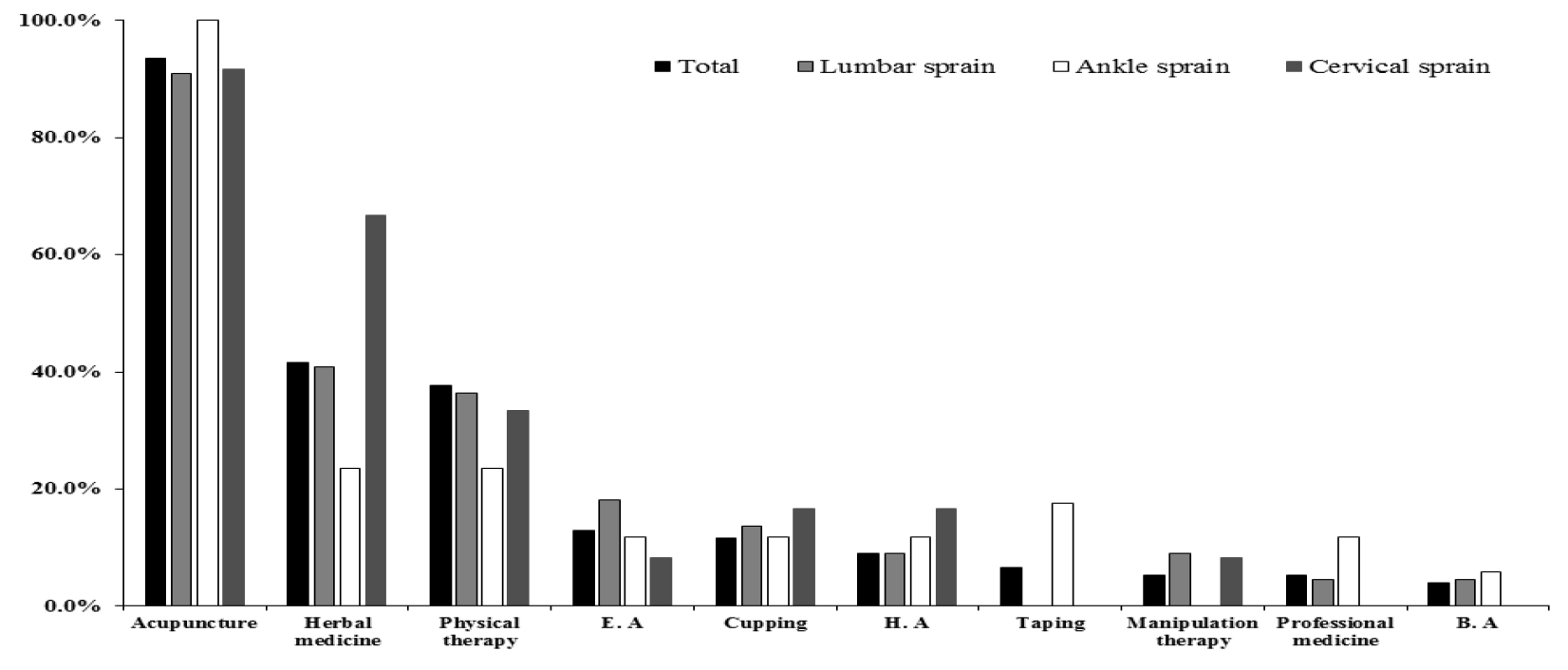Survey of Korean Medicine Military Doctors for Establishing Clinical Evidence of Korean Medicine Treatment in Military Medical Service
Article information
Abstract
Objectives
The purpose of this study was to investigate the status of Korean medicine treatment, and to analyze problems and demands to provide basic data on Korean medicine in military medical services.
Methods
This survey was completed by 30 volunteer Korean medicine military doctors on service via a web-based questionnaire system. The questionnaire was developed through in-depth interviews with Korean medicine military doctors and consisted of general information on the subject, overall characteristics of the medical environment, current status of Korean medicine care in each workplace, problems and needs, and related clinical evidence and education.
Results
Korean medicine military doctors administered acupuncture treatment most frequently in clinical practice. The most common complaints were related to musculoskeletal diseases, which accounted for 86.5% of all diseases, including those of the respiratory, digestive, and nervous systems. Most of the problems in Korean medicine care were pointed out as being due to a lack of awareness of Korean medicine in the military. Many doctors were aware that it is necessary to establish clinical evidence for Korean medicine in the military, and were also positive about the possibility of performing clinical research in the military, but the experience of actual participation in clinical research or related education was uncommon.
Conclusions
Korean medicine military treatment differs from private medical care due to the specificity of each workplace and the military medical system. In the future, it will be necessary to establish an appropriate Korean medicine treatment model in the military suitable for these characteristics and strategic plans for clinical evidence.











